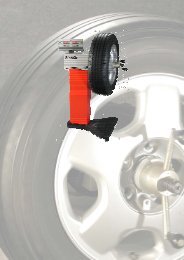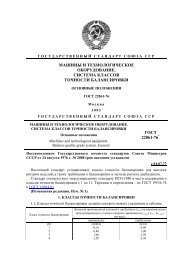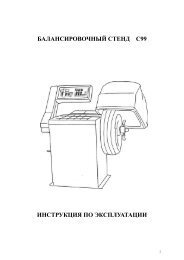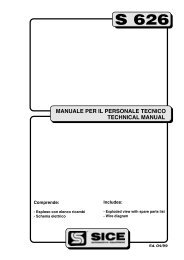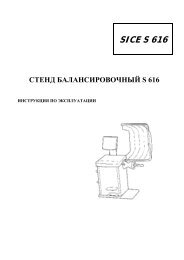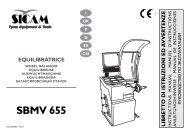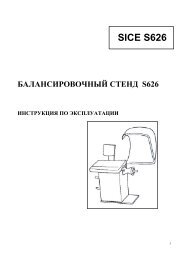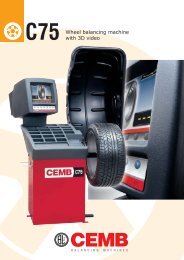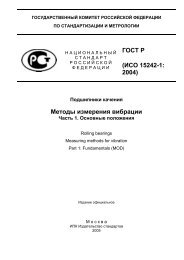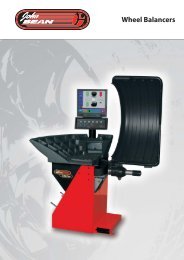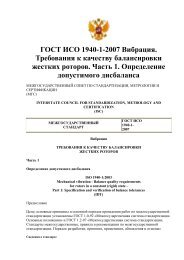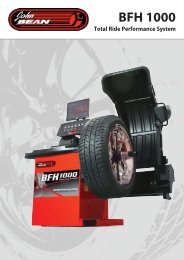Garrett Catalog - RB Racing
Garrett Catalog - RB Racing
Garrett Catalog - RB Racing
Create successful ePaper yourself
Turn your PDF publications into a flip-book with our unique Google optimized e-Paper software.
<strong>Garrett</strong> ®<br />
by Honeywell<br />
Turbo Basics<br />
How Do I Choose the Right Turbo?<br />
Selecting the proper turbocharger for your specific<br />
application requires many inputs. With decades of collective<br />
turbocharging experience, the <strong>Garrett</strong> ® Performance<br />
Distributors can assist in selecting the right turbocharger for<br />
your application.<br />
The primary input in determining which turbocharger<br />
is appropriate is to have a target horsepower in mind.<br />
This should be as realistic as possible for the application.<br />
Remember that engine power is generally proportional to<br />
air and fuel flow. Thus, once you have a target power level<br />
identified, you begin to hone in on the turbocharger size,<br />
which is highly dependent on air flow requirements.<br />
Other important factors include the type of application. An<br />
autocross car, for example, requires rapid boost response.<br />
A smaller turbocharger or smaller turbine housing would be<br />
most suitable for this application. While this will sacrifice<br />
ultimate power due to increased exhaust backpressure at<br />
higher engine speeds, boost response of the small turbo will<br />
be excellent.<br />
Alternatively, on a car dedicated to track days, peak<br />
horsepower is a higher priority than low-end torque. Plus,<br />
engine speeds tend to be consistently higher. Here, a<br />
larger turbocharger or turbine housing will provide reduced<br />
backpressure but less immediate low-end response. This<br />
is a welcome trade-off given the intended operating<br />
conditions.<br />
Selecting the turbocharger for your application goes<br />
beyond “how much boost” you want to run. Defining your<br />
target power level and the primary use for the application<br />
are the first steps in selecting the best <strong>Garrett</strong> ® Turbo<br />
for your vehicle. This catalog includes the formulas and<br />
considerations needed to corectly match a turbo to either<br />
your gasoline or diesel engine!<br />
What is A/R?<br />
A/R describes a geometric characteristic of all compressor<br />
and turbine housings. It is defined as the inlet cross-sectional<br />
area divided by the radius from the turbo centerline to the<br />
centroid of that area.<br />
Compressor A/R - Compressor performance is largely<br />
insensitive to changes in A/R, but generally larger A/R housings<br />
are used to optimize the performance for low boost applications,<br />
and smaller housings<br />
are used for high boost<br />
applications. Usually there<br />
are not A/R options available<br />
for compressor housings.<br />
Turbine A/R – Turbine<br />
performance is greatly<br />
affected by changing the<br />
A/R of the housing. Turbine<br />
A/R is used to adjust the<br />
flow capacity of the turbine.<br />
Using a smaller A/R will increase the exhaust gas velocity<br />
into the turbine wheel, causing the wheel to spin faster at<br />
lower engine RPMs giving a quicker boost rise. This will<br />
also tend to increase exhaust backpressure and reduce the<br />
max power at high RPM. Conversely, using a larger A/R<br />
will lower exhaust gas velocity and delay boost rise, but the<br />
lower backpressure will give better high-RPM power. When<br />
deciding between A/R options, be realistic with the intended<br />
vehicle use and use the A/R to bias the performance toward<br />
the desired powerband.<br />
What is Wheel Trim?<br />
Trim is an area ratio used to describe both turbine and<br />
compressor wheels. Trim is calculated using the inducer and<br />
exducer diameters.<br />
Trim = (Inducer 2 /Exducer 2 ) x 100<br />
Example:<br />
Inducer diameter = 88mm<br />
Exducer diameter = 117.5mm<br />
Trim = (88 2 /117.5 2 ) x 100= 56 Trim<br />
As trim is increased, the wheel can support more air/gas flow.<br />
Compressor Wheel Trim = (Inducer 2 /Exducer 2 ) x 100<br />
Turbine Wheel Trim = (Exducer 2 /Inducer 2 ) x 100<br />
Honeywell<br />
www.TurboBy<strong>Garrett</strong>.com



